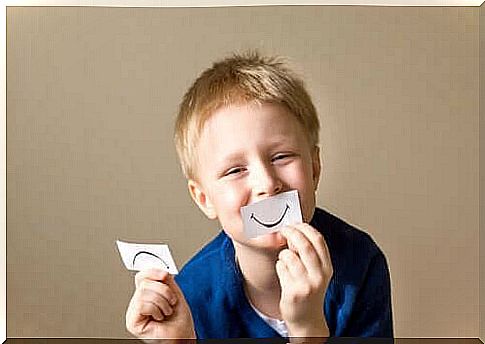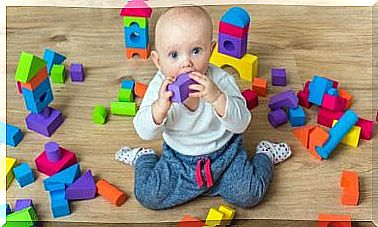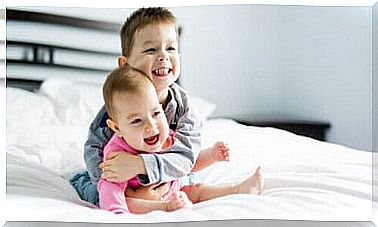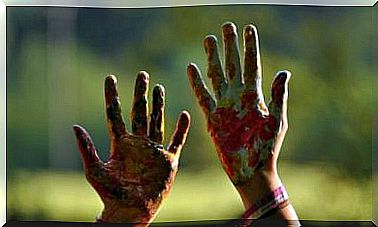4 Exercises To Promote A Child’s Self-awareness

As parents, we want our children to grow into emotionally balanced adults. To achieve this, we need to provide them with tools to enable them to face difficult situations and identify their own abilities, characteristics, weaknesses, and strengths. To facilitate the task, today we share four exercises to promote a child’s self-awareness.
Self-awareness means the ability to identify oneself as an individual detached from the environment and other individuals and to notice one’s own feelings, thoughts, and characteristics. It also involves an understanding of the interaction between oneself and others. Because self-awareness is an awareness of one’s own feelings, moods, limitations, strengths, and skills, it is an important quality that everyone should develop. It would be a good idea to start promoting a child’s self-awareness when he or she is about two years old. Developing self-awareness helps the child connect with themselves and understand the consequences of their own actions. When a person is aware of himself, he is able to understand the factors that trigger a certain behavior in him.
4 exercises to promote the child’s self-awareness

1. The Handbook of the Heart
Because our feelings come from the heart, we must learn to listen to it. Help your child differentiate between different emotions and discover new emotions.
- What does the exercise entail? You can draw or paste pictures on paper from different situations that your child may identify with. These can be, for example, a playground, family, beach or mountains. On each piece of paper, draw a blank face on which the child can draw the feeling he or she feels in each situation.
- Exercise development. Let the child visualize each situation. You can tell the child what can happen in each situation so that the child can develop an image of the situation on their own. Then have the child draw a face that expresses the feeling the child is experiencing.
- What does the exercise achieve? The goal of this exercise is for the child to recognize different emotions that arise from different situations. It promotes the child’s self-awareness and enables the child’s emotional expression. In addition, it promotes interaction between the child and the parents.
2. Storytelling
Storytelling is a big part of many cultures. From an early age, a child has many stories to tell.
- What does the exercise entail? Choose a story that fits your child’s personality well and tell it by applying it. Tell the events, bringing the people and experiences of the story to life and taking breaks, increasing the excitement, exclaiming and changing the tone. The intention is for the child to be completely immersed in the story.
- Exercise development. Find a calm space where you can tell the story to the child, highlighting specific passages in the story so the child can internalize and process everything they hear. When the story is over, ask the child what he or she liked in the story, what made him or her happy, what made him or her sad, and what he or she would like to change in the story.
- What does the exercise achieve? The goal of this exercise is to release the child’s inner emotions. You also help develop your child’s empathy. The exercise encourages the child to consider different scenarios, so try to get the child to think about what he or she would do differently in the story.

3. My letter
As individuals, we are sometimes concerned about how we look to other people. So we were worried about how other people would see us. To promote your child’s self-awareness, try the following exercise.
- What does the exercise entail? Other family members can also be involved in this exercise. Each participant should have a pen and paper, and they should write down on the paper positive thoughts about the other participants.
- Exercise development. Each participant can tape a blank piece of paper on their back on which other participants write positive traits about that person. After the exercise, everyone is allowed to read what others are likely to write on their own paper.
- What does this exercise achieve? This exercise promotes interaction between the child and other family members. The aim is to consider how the child feels in relation to others and to express their own feelings by writing them down on paper. The child also gets an idea of how other people see him.
4. Self-expression through expressions
One way to express yourself is through gestures and facial expressions. Since your goal is to promote your child’s self-awareness, you should work on this from this perspective as well.
- What does the exercise entail? In situations where the child is unable to speak, he or she may express his or her feelings differently. This is a very important element in self-awareness.
- Exercise development. Write words and phrases on the cards, and divide the children into two groups. In each group, one person is selected to present the word or phrase on the card as a pantomime. You can help children by giving examples of what gestures and expressions children can use. In addition, this exercise will help the child identify their own skills and limitations.
- What does the exercise achieve? This exercise helps the child to express themselves and promotes the interaction between the child and the adult. In addition, it encourages the child to make connections with other children.








